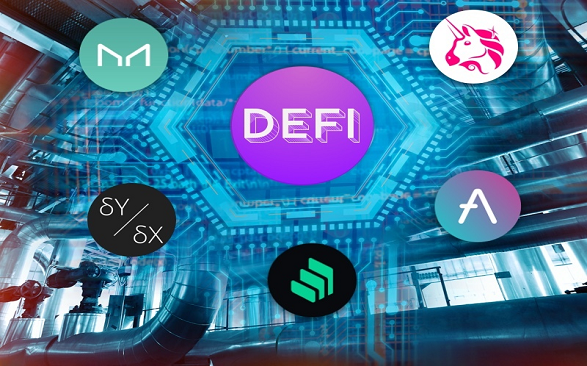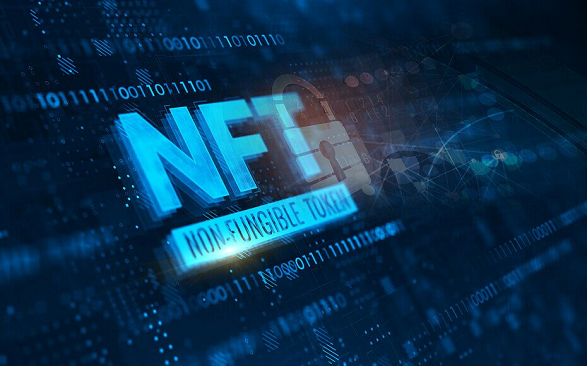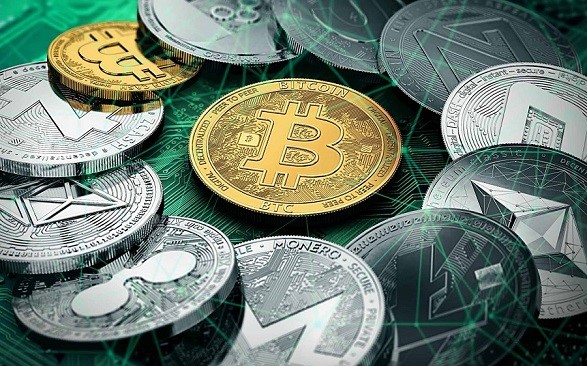The fintech industry continues to boom. This boom is courtesy of innovations such as decentralized finance (DeFi), cryptocurrency, and blockchain technology. While the highlighted positive disruptions are all interrelated, DeFi is a new and digital financial paradigm that relies on blockchain technology to enable users to execute all kinds of financial-related activities, including lending, borrowing, assets management, and trading, in a manner that takes middlemen out of the way.
In particular, DeFi emerged to reduce the excessive dependency on traditional centralized financial institutions such as banks by offering an alternative way to execute financial transactions seamlessly and conveniently using smart contracts.
Despite being a relatively new sector, the DeFi ecosystem has been growing significantly. By April 2023, the DeFi ecosystem boasts over $53 billion and counting in total value locked (TVL) on thousands of protocols across many blockchain networks, including Ethereum, Tron, and Binance Smart Chain (BSC).
This ever-expanding DeFi ecosystem includes all decentralized applications (dApps)—both products and services—offering financial solutions founded on the concept of distributed ledger technology.
Just like the internet, DeFi is projected to become an integral part of our lives. DeFi grants easy access to a variety of financial services and products that were either inaccessible or challenging to obtain with the traditional centralized banks. People around the world who have historically been disadvantaged by traditional financial institutions can benefit greatly from DeFi, increasing the level of financial inclusion.
To fully benefit or profit from the advantages of DeFi and minimize any risks, crypto users must have a thorough understanding of what DEFi is and how it operates. In this article, we’ll give an overview of DeFi and its ecosystem.
What is Decentralized Finance (DeFi)?
DeFi is a term used to describe a modern financial system that offers services such as cryptoasset’s lending, borrowing, exchanging, and investing with the help of smart contracts. Notably, DeFi leverages blockchain technology to offer these financial services to users, reducing their dependency on banks and other financial institutions.
The DeFi innovation draws its uniqueness from allowing individuals to execute financial transactions by interacting with smart contracts or software programs that encode the concept of traditional financial operations. In other words, DeFi protocols allow you to carry out all finance-related activities digitally and in a more private, secure and convenient way.
Accessibility, privacy, transparency, and security are among DeFi’s most notable merits. All of these make DeFi extra appealing to individuals and institutions. More so, anyone with a smartphone and internet connection can access the DeFi ecosystem to benefit from its services. This contrasts with traditional finance whose services can be tasking to access coupled with the many conditions an individual must meet.
Given the benefits that DeFi brings and the numerous advantages it has over centralized finance (CeFi), the technology continues to expand with more users embracing DeFi and thousands of DeFi projects and platforms being launched. In particular, the growth of DeFi has been fueled by the increasing adoption of cryptocurrencies and blockchain technology, as well as the desire for more transparent and accessible financial services.
Advantages of DeFi over CeFi
DeFi is a game changer as its emergence has noticeably increased financial inclusion. Here are some of the reasons DeFi is increasingly preferred over CeFi:
- Improved Privacy: While CeFi requires users to compulsorily share personal information which could constitute a security breach or be more vulnerable to a security breach, DeFi users are not required to share any personal data.
- Easy Accessibility: The unbanked and underbanked cannot access CeFi services such as lending and borrowing. On the other hand, all you need to access financial services and other investment options in the DeFi world is just a digital wallet and an internet connection.
- Investment Opportunities: There are multiple and more flexible ways to invest and earn with DeFi but the same cannot be completely said for CeFi.
- Community Governance: As its name implies, CeFi involves a ‘central’ authority such as banks who reserve control while governance is devolved and participatory in the DeFi realm.
- Service Availability: DeFi services are available 24/7/356 whereas CeFi institutions operate only when they want to, generally open 8 hours, weekdays only.
- Funds Accessibility: One of the most notable lapses with CeFi, generally, is the inability to get hold of your deposited funds anytime and anywhere. Meanwhile, users have easy access to their funds on DeFi platforms. In other words, CeFi is custodial while DeFi is non-custodial by design.
The DeFi Ecosystem and How You Can Benefit
The DeFi ecosystem encompasses all financial services offered through dApps built on different smart-contract platforms, including Ethereum, Binance Smart Chain, and Polygon. Below are some of the most popular components of the DeFi ecosystem:
1. Decentralized Exchanges
The most popular DeFi solution is decentralized exchanges, commonly known as DEX. Using the concept of automated market makers (AMM) and liquidity pools, DeFi users can indulge in trading cryptoassets anonymously and seamlessly. DEXs allow users to trade cryptocurrencies directly from their wallets, in contrast to centralized exchanges, which are managed by a central body and require users to deposit money into a centralized account.
Related: Top 5 Decentralized Crypto Exchanges You Should Know
2. Lending and Borrowing Platforms
Also known as peer-to-peer lending and borrowing, this is a growing segment of the DeFi ecosystem. Decentralized lending and borrowing platforms allow users to lend or borrow cryptoassets just by clicking a few buttons.
Aave, Compound, and MakerDAO are three well-known decentralized lending and borrowing platforms. Users can lend and borrow several cryptocurrencies on these platforms, including stablecoins for example USDT and USDC. Deposits made by users can earn interest, and borrowers can get loans at reasonable interest rates.
Related: Introduction to Stablecoins: USDT, USDC, and BUSD
3. Decentralized Asset Management
Asset management is the process of handling and managing other people’s money in exchange for a fee. Decentralized asset management is the practice of providing services related to asset management using smart contracts. Some popular decentralized asset management platforms are Set Protocol, Zerion, Gnosis, and dHEDGE.
4. Yield Farming Platforms
Another aspect of DeFi is yield farming which involves locking cryptoassets in liquidity pools to earn crypto rewards. Users who lock funds in DeFi protocols to enhance trading, lending, or borrowing operations are known as liquidity providers. They get incentives when other users transact with their locked funds within the protocol. Some popular yield-farming platforms are Uniswap, PancakeSwap, Aave, Curve Finance, and Yearn Finance.
Notably, the DeFi ecosystem is still in its early stages, and new dApps and services are being developed all the time.
Risks associated with DeFi
Despite being lauded as a game-changing innovation with the potential to transform today’s rather exclusionary financial landscape, DeFi is not without risks. It is, therefore, important for users to be aware of some of the dangers associated with decentralized finance.
The issue of hacking is undoubtedly the most critical. Over the years, numerous DeFi protocols have suffered security breaches which usually result in users’ cryptoassets being stolen. Thus, when dealing with DeFi platforms, it is pertinent to do so with caution to avoid losing your funds. And these hack incidents are often caused by smart contract vulnerabilities.
Liquidity risk is another danger related to DeFi. Liquidity providers help ensure that there are adequate funds available for trading on DEXs. Insufficient liquidity on an exchange may lead to excessive transaction costs or the inability to complete trades.
Also, DeFi enthusiasts should endeavour to embark on thorough DeFi project research to avoid rug pulls. The term ‘rug pull’ refers to a situation where project founders defraud users by draining liquidity pools on a DeFi platform. A rug pull will leave you crashing on the bare floor, emptied.
Related: Why is liquidity important to your crypto investment?
Conclusion
Gradually, DeFi is changing the face of finance in today’s increasingly decentralized economy. As DeFi continues to evolve, socially and technologically, its significance in the larger financial system can only grow bigger. Thanks to its transparency and security benefits, DeFi is pushing the boundaries of financial inclusion. Consequently, DeFi has quickly become a popular trend with many individuals and institutions adopting it as an alternative window to economic freedom devoid of censorship and restrictions.
But one should not give a blind eye to the significant risks associated with DeFi. These risks include hacking, liquidity risks, and smart contract bugs.
On the whole, the future of DeFi looks great as more developments are expected to be introduced to improve both user experience and safety.
Read also: How do you determine the liquidity of a crypto exchange?
Credit: Ndianabasi Tom
A crypto journalist and content writer who has been talking about cryptocurrency and blockchain technology since 2018, Ndianabasi is a Writer at Crypto Asset Buyer (CAB).




